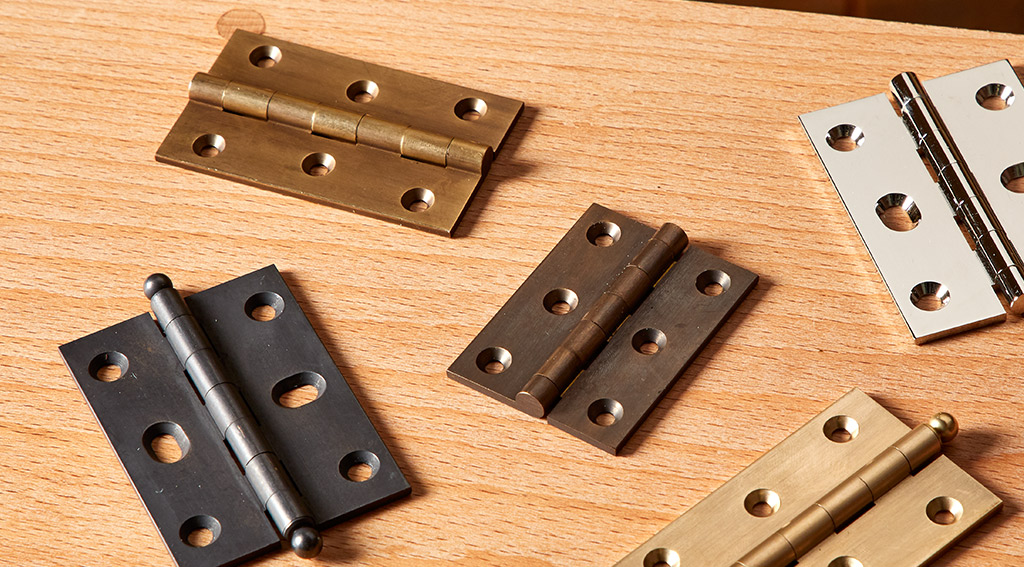
When I’m building a project, it’s easy to get caught up in the nitty-gritty construction techniques. I want to make sure everything works out right. Sometimes, it pays to step back and figure out why and how one piece of furniture looks good and another can be a little “off.” This is especially true when it comes to hardware.
The right hardware can really add to the look of a project. But that’s only if it’s placed well on the piece. One example of this is the butt hinges used on the doors. Knowing the best location to place hinges may seem like equal parts no-brainer and a mystery, but there are some secrets you can use to solve the puzzle.
BASIC GUIDELINES
Figuring out where to locate the hinges on a door doesn’t have to be a guessing game. While these aren’t hard and fast rules, I have a few guidelines that I use as a starting point for placing hinges.
Symmetrical Placement. The first rule of thumb is to place the hinges the same distance from the top and bottom ends of the door. To me, this gives the project a more balanced look.
Align With Rails. The real trick is figuring out just what the distance should be. For this, I use the design of the door as a guide. Most of the doors I build are frame and panel assemblies with either a wood or glass panel. So I usually align the end of each hinge with the inside edge of the rails. As your eye follows along the horizontal edge of the rail, the hinge seems to be in a “natural” spot.
But that doesn’t mean it works for every door. For example, if the doors are shorter and nearly square in shape, aligning the hinges with the rails would place them too close together. And the resulting space between the hinges would look too tight. Instead, I centered the hinges with the inside edge of the rails.
SPECIAL SITUATIONS
The previous guidelines work well on uncomplicated doors. When the doors are more complex, I’ll use some variations to the basic principles.
Decorative Details. One way to dress up a door is to add decorative details like contrasting plugs. If the hinges were aligned with the rails, both elements would compete with each other. The solution is to step the hinges towards the center slightly. This allows the plugs and hinges to stand out on their own.
Different Rail Widths. There’s no rule that says both rails on a door need to be the same width. Aligning the hinges with the rails would result in an uneven hinge placement top to bottom.
The answer is to choose one of the rails as the guide for locating both hinges. Since the upper rail is relatively narrow, I used the wider lower rail as my guide.
Large Doors. Highly detailed doors that have it all: uneven rails, decorative plugs, divided lights, and they’re large require special consideration. Locating the hinges here is a challenge. First, for more support, I added a third pair of hinges centered on the doors. Then I used the narrower upper rail as the basis for locating the top and bottom hinges. This also centers the bottom hinge on the lower rail.
Test Run. Before you commit to the location of the hinges, it’s a good idea to tape them to the door temporarily. This way, you can see for yourself how a given approach will look. Locating hinges isn’t mysterious. All it takes are some simple principles and the flexibility to bend them when necessary.












